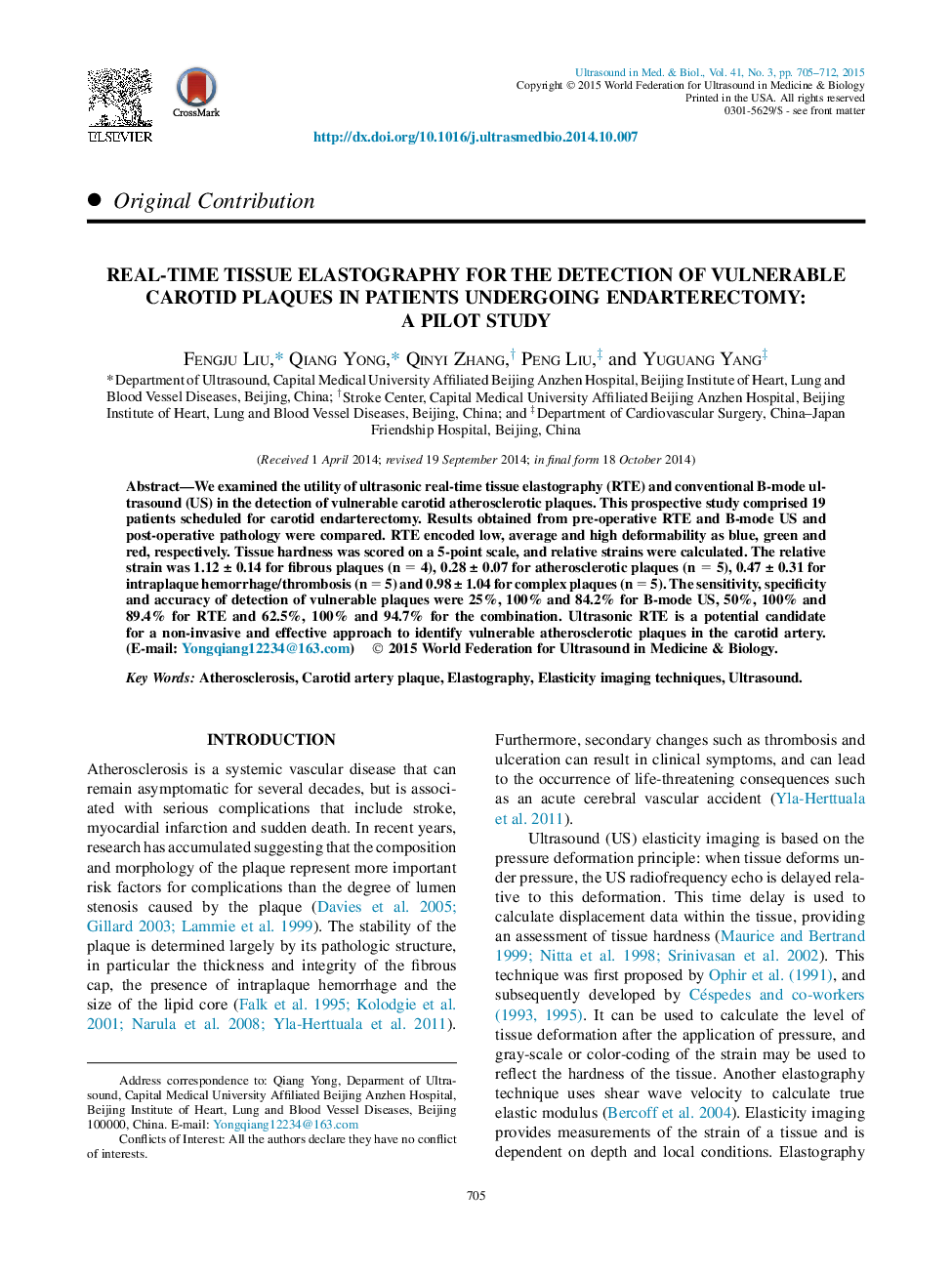| Article ID | Journal | Published Year | Pages | File Type |
|---|---|---|---|---|
| 10691331 | Ultrasound in Medicine & Biology | 2015 | 8 Pages |
Abstract
We examined the utility of ultrasonic real-time tissue elastography (RTE) and conventional B-mode ultrasound (US) in the detection of vulnerable carotid atherosclerotic plaques. This prospective study comprised 19 patients scheduled for carotid endarterectomy. Results obtained from pre-operative RTE and B-mode US and post-operative pathology were compared. RTE encoded low, average and high deformability as blue, green and red, respectively. Tissue hardness was scored on a 5-point scale, and relative strains were calculated. The relative strain was 1.12 ± 0.14 for fibrous plaques (n = 4), 0.28 ± 0.07 for atherosclerotic plaques (n = 5), 0.47 ± 0.31 for intraplaque hemorrhage/thrombosis (n = 5) and 0.98 ± 1.04 for complex plaques (n = 5). The sensitivity, specificity and accuracy of detection of vulnerable plaques were 25%, 100% and 84.2% for B-mode US, 50%, 100% and 89.4% for RTE and 62.5%, 100% and 94.7% for the combination. Ultrasonic RTE is a potential candidate for a non-invasive and effective approach to identify vulnerable atherosclerotic plaques in the carotid artery.
Related Topics
Physical Sciences and Engineering
Physics and Astronomy
Acoustics and Ultrasonics
Authors
Fengju Liu, Qiang Yong, Qinyi Zhang, Peng Liu, Yuguang Yang,
